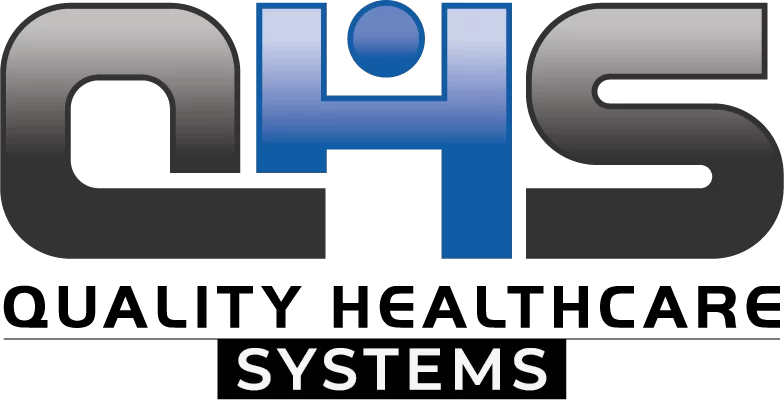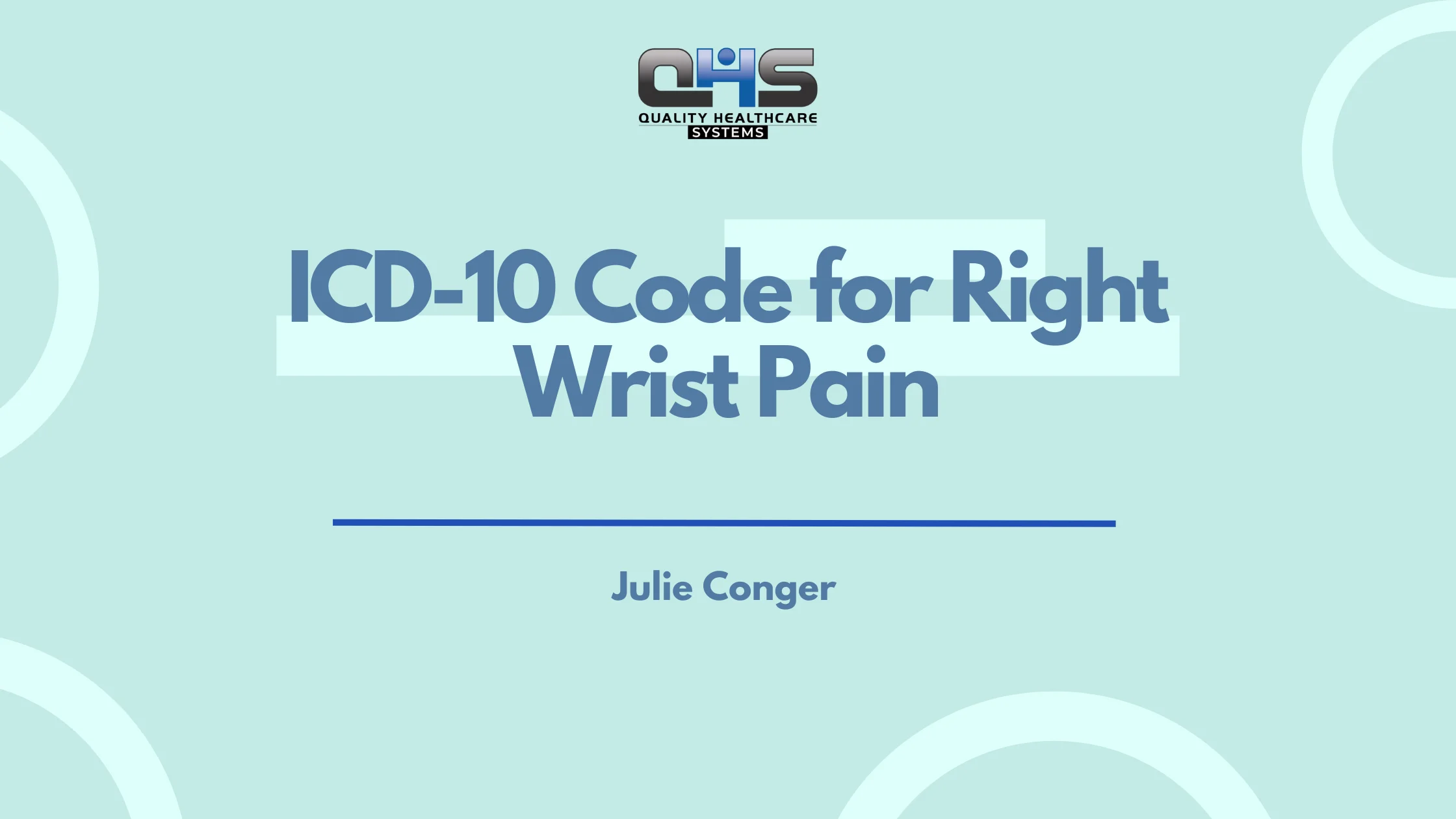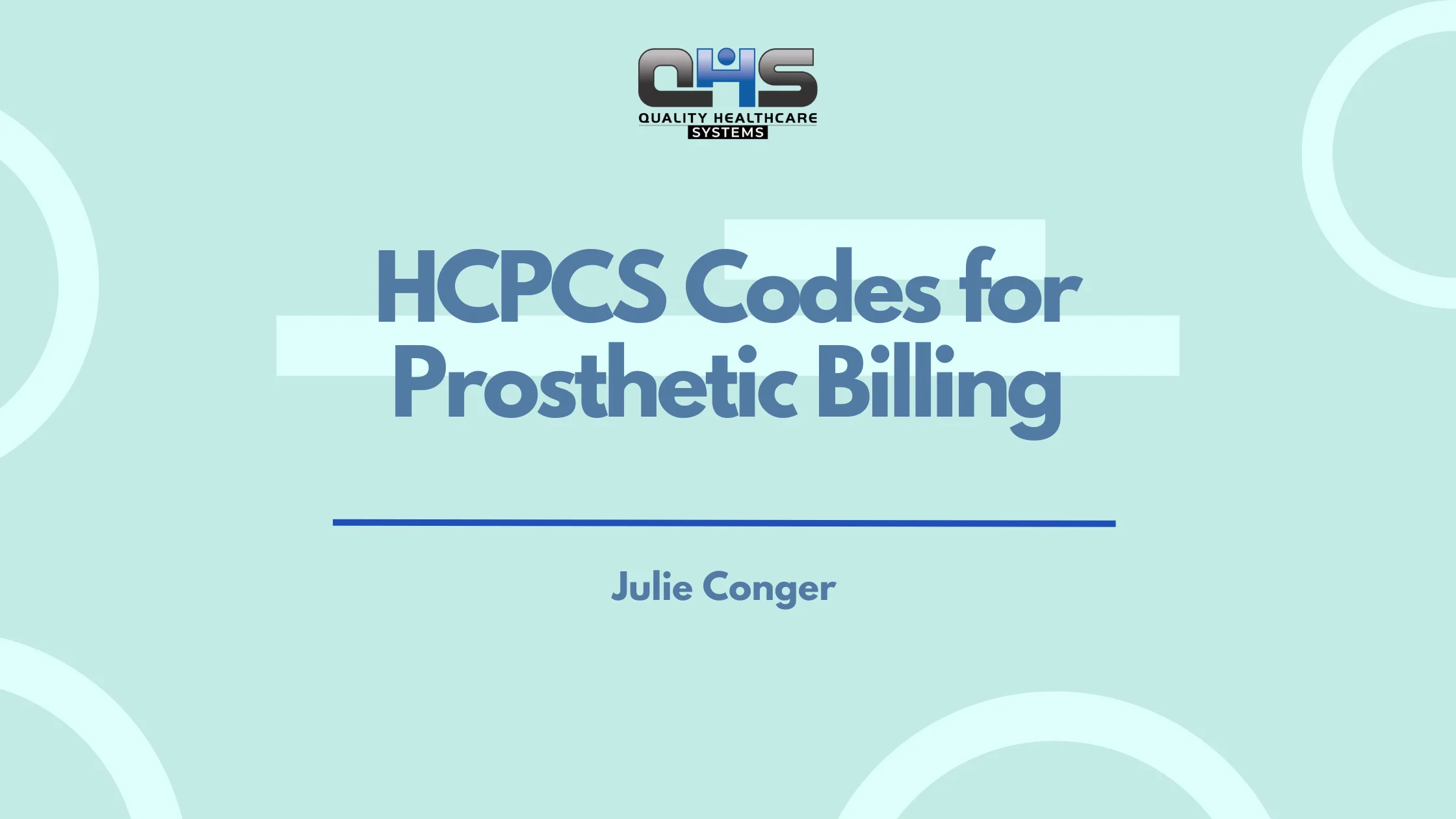Orthopedic billing is a specialized area of medical billing that deals with coding and reimbursement for musculoskeletal treatments. It includes procedures like joint replacements, physical therapy, and durable medical equipment (DME) billing. Due to its complexity, orthopedic billing requires accurate coding, thorough documentation, and strict compliance with payer guidelines to avoid denials and delays.
In this guide, we’ll break down how orthopedic billing works, how it differs from DME billing, the essential elements of a clean orthopedic claim, the most common billing challenges providers face, and how QHS Health helps orthopedic practices streamline revenue cycle management and improve reimbursement outcomes.
What Is Orthopedic Billing?
Orthopedic billing is the process of translating musculoskeletal healthcare services—such as surgeries, therapies, and equipment—into standardized billing codes and submitting them to insurance payers for reimbursement. It plays a crucial role in ensuring orthopedic providers receive timely payments for the care they deliver.
This process includes three main types of medical coding:
-
ICD-10 codes for diagnoses (e.g., bone fractures, ligament tears, arthritis)
-
CPT codes for procedures (e.g., arthroscopy, joint injections)
-
HCPCS codes for medical supplies and equipment (e.g., orthotic devices, braces)
Orthopedic practices typically offer services such as:
-
Fracture repairs and follow-ups
-
Arthroscopic shoulder and knee surgeries
-
Orthotic device fitting and dispensing
-
Post-surgical and injury-related physical therapy
-
Joint aspirations and corticosteroid injections
How Orthopedic Billing Works Behind the Scenes
Orthopedic billing connects clinical treatment to financial reimbursement by converting medical actions into universally accepted code sets. Each diagnosis, surgical procedure, or equipment item is mapped to a code that communicates to insurance payers what was done and why it was necessary.
For example:
-
A meniscus tear diagnosis is paired with a knee arthroscopy CPT code and any related DME codes for post-surgery bracing.
-
A fracture diagnosis may require both surgical repair and ongoing physical therapy, each billed under different procedure codes.
Because orthopedic practices handle diverse cases and high patient volumes, precision in coding and documentation is essential. Mistakes in these areas can lead to claim denials, delayed reimbursements, or compliance audits. Timely, accurate billing ensures smoother revenue cycles and keeps administrative burdens in check.
DME Billing vs. Orthopedic Billing: What’s the Difference?
Though orthopedic billing and DME (Durable Medical Equipment) billing are often linked—especially in musculoskeletal care—they serve different purposes and follow distinct rules. Understanding these differences is essential for accurate claim submission and avoiding denials.
Key Difference #1: Nature of Services Provided
Orthopedic billing includes the evaluation, diagnosis, and treatment of musculoskeletal conditions—covering everything from fracture repairs to surgical procedures.
DME billing, in contrast, deals exclusively with equipment provided to the patient, such as braces, walkers, crutches, or custom orthotic devices. These items are typically prescribed as part of ongoing treatment but are billed separately under different criteria.
Key Difference #2: Coding Requirements
Orthopedic billing uses a combination of:
-
ICD-10 codes for diagnoses (e.g., sprains, dislocations)
-
CPT codes for procedures (e.g., arthroscopies, injections)
-
HCPCS Level II codes for select equipment and supplies
DME billing relies primarily on HCPCS Level II codes, often paired with modifiers to specify:
-
Whether the equipment is rented or purchased
-
The duration of use
-
Medical necessity based on payer guidelines
Key Difference #3: Documentation Standards
Orthopedic billing typically requires:
-
Operative reports
-
Clinical notes
-
Progress documentation
-
Imaging or diagnostic test results
DME billing, however, often involves more rigid paperwork:
-
Physician’s signed prescriptions
-
Proof of delivery (POD)
-
Certificate of Medical Necessity (CMN) or prior authorization documentation
-
Detailed explanation of medical need for the device.
Understanding Functional and Regulatory Differences
DME and orthopedic billing may both occur in orthopedic practices, but they align with different billing philosophies. Orthopedic billing is procedure-driven, meaning claims are tied to clinical interventions and provider care. DME billing is product-driven, meaning reimbursement depends on physical items issued and the proof of necessity for each.
These distinctions impact everything from how claims are coded to what documentation is required. DME claims are more frequently scrutinized for compliance because of their association with potential fraud or misuse, making detailed audit trails and justification critical.
On the other hand, orthopedic billing places emphasis on the clinical decision-making process, where progress notes, diagnosis accuracy, and coding precision determine whether a claim is paid in full.
Understanding both systems allows practices to manage their billing departments more efficiently, ensure compliance, and reduce costly rework or denials.
What Are the Challenges in Orthopedic Billing & How Can You Overcome Them?
Orthopedic billing is packed with nuance—multiple procedures, tight coding rules, and ever-changing compliance standards. If you’re running an orthopedic practice, these issues can slow down cash flow and increase claim denials. Let’s break down the top challenges and how to handle them like a pro.
1. High Claim Denial Rates
Why it happens
Many orthopedic claims get rejected due to incorrect coding, missing modifiers, or failing to prove medical necessity. Even small documentation gaps can flag your claim.
How to fix it
Use real-time claim scrubbing tools and make sure your billing staff is trained on the latest CPT and ICD-10 updates. Accurate coding = fewer denials.
2. Bundled Procedure Confusion
Why it happens
Some orthopedic services—like imaging or injections—may be bundled under one CPT code. If you bill them separately without proper justification, you could be overcoding or undercoding.
How to fix it
Use NCCI edits to check which procedures are bundled. Apply modifier 59 only when you can justify separate billing based on CMS rules.
3. Authorization Errors
Why it happens
Missing or delayed prior authorizations is one of the top reasons claims are denied. You might perform a procedure correctly but still not get paid.
How to fix it
Invest in billing software that tracks authorizations in real time. Stay in touch with insurance reps and confirm approval before scheduling procedures.
4. Complex Post-Operative Billing
Why it happens
Surgeries come with global periods, during which routine follow-ups aren’t billable. If you mistakenly submit a claim, it gets rejected—or worse, flagged.
How to fix it
Train your team on global periods. Use modifier 24 or 79 to bill for unrelated services during post-op care when allowed by payer policy.
5. Inaccurate DME Billing
Why it happens
DME claims often miss key paperwork like physician orders or proof of delivery. That’s a compliance red flag and could trigger audits.
How to fix it
Create a checklist for DME submissions. Include CMNs, ABNs, and delivery logs. These documents are critical to justify medical necessity and avoid rejections.
How QHS Health Supports Faster and More Accurate Orthopedic Billing
At QHS Health, we specialize in orthopedic revenue cycle management for practices and outpatient centers. Here’s how we help reduce orthopedic billing errors and boost your practice’s bottom line:
1. Orthopedic-Certified Billing Teams
Our billing experts are certified in orthopedic coding and billing and stay updated on annual CPT and ICD changes. We ensure each claim is coded with precision and submitted with appropriate modifiers.
2. End-to-End Authorization Management
We manage all prior authorizations—whether for joint replacements or DME—by integrating directly with payer portals and automating reminders.
3. Compliance-Driven Documentation Support
Our clinical documentation improvement (CDI) team works alongside your providers to ensure each SOAP note and operative report fully supports your billing codes.
4. Advanced Denial Management
Denied claims are automatically flagged and corrected within 24–48 hours. Our AR specialists aggressively follow up with payers to minimize lost revenue.
5. Transparent Reporting and Analytics
You get real-time dashboards showing first-pass claim acceptance rates, denial trends, and reimbursement timelines. This enables you to make data-driven improvements to your practice’s billing process.
Final Thoughts
Orthopedic billing is a high-stakes, detail-oriented process that demands precision, speed, and constant compliance monitoring. By understanding its differences from DME billing, mastering its core elements, and avoiding common pitfalls, your practice can secure faster reimbursements and avoid revenue leakage.
Partnering with an experienced billing partner like QHS Health means you don’t have to navigate this complexity alone. Our orthopedic billing specialists handle everything from pre-authorizations to appeals—so you can focus on delivering quality care.
Frequently Asked Questions
What Are the Most Common Orthopedic Billing Errors?
Orthopedic billing errors are often caused by incorrect coding, missing documentation, and improper use of modifiers. Common mistakes include:
-
Wrong Diagnosis Codes: Using vague or inaccurate ICD-10 codes instead of specific ones for fractures or joint conditions.
-
Missed Modifiers: Failing to apply correct modifiers (like RT/LT for right/left-side procedures) can lead to denials.
-
Lack of Medical Necessity Documentation: Failing to provide sufficient clinical evidence for treatments, like physical therapy or imaging, can result in reimbursement delays.
To minimize errors, ensure accurate documentation, use real-time coding validation software, and regularly audit claims before submission.
2. How Can I Reduce Orthopedic Billing Denials?
Reducing orthopedic billing denials requires a proactive approach, including accurate coding and proper documentation. Here’s how you can improve your claim acceptance rate:
-
Ensure Accurate Coding: Regularly update ICD-10 and CPT codes to reflect the latest changes.
-
Provide Complete Documentation: Include all supporting documents, such as operative reports, imaging results, and therapy notes, to justify the procedure and diagnosis.
-
Use Appropriate Modifiers: Apply modifiers to prevent bundling errors and clarify services that are separately billable.
-
Pre-Authorization: Always obtain prior authorization for procedures that require it, like elective surgeries.
By maintaining comprehensive records and using specialized billing tools, practices can significantly reduce the chance of denials.
3. How Do Orthopedic Billing Codes Differ for Different Types of Procedures?
Orthopedic procedures often involve a wide range of treatment types, which require specific billing codes. For example:
-
Fracture Repair: Fracture repairs typically require both ICD-10 diagnosis codes for the type of fracture and CPT codes for the surgical procedure performed (e.g., closed vs. open reduction).
-
Joint Replacement: Joint replacements, like knee or hip arthroplasty, are billed using specialized CPT codes for the procedure and a ICD-10 code for the diagnosis.
-
Physical Therapy: Follow-up therapy for orthopedic patients is billed with CPT codes for therapeutic exercises, and documentation must prove medical necessity.
Each procedure must be carefully reviewed to ensure that the correct code combination is used, reducing the risk of billing errors and denials.
4. What Role Does Prior Authorization Play in Orthopedic Billing?
Prior authorization (PA) is a critical step in orthopedic billing, especially for high-cost procedures like surgeries or advanced imaging. Insurance companies often require PA to ensure that a procedure is medically necessary and complies with coverage policies.
-
Why it’s Needed: PA is needed to confirm that the proposed treatment or surgery is justified and covered by the patient’s insurance plan.
-
How to Manage It: Submit the PA request as early as possible, including all necessary supporting documentation, such as physician notes and diagnostic results.
-
What Happens Without It: If a procedure requires PA and it is not obtained, the insurance company may deny the claim altogether, resulting in delayed payments or no reimbursement.
To streamline the process, utilize automated PA tracking systems and regularly communicate with insurance providers to avoid delays.




